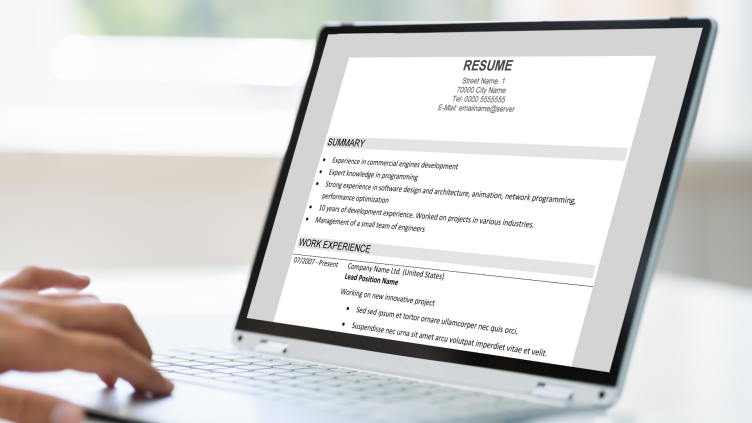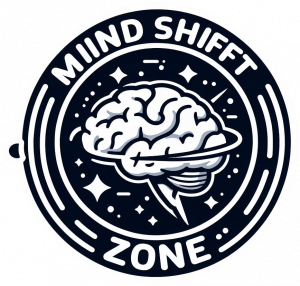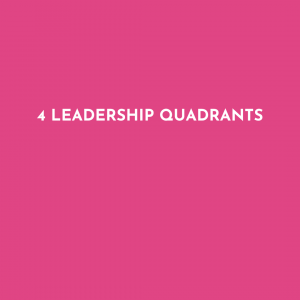Follow our step-by-step tips for updating your resume and creating an online presence.
Sometimes it’s necessary to have a career break and step out of the workplace for a while; be it for personal or professional reasons. When the time comes to return to work, it can be an equally exciting and daunting experience for job seekers, regardless of their background or length of time out of the workforce. There are two recurring themes that present themselves as barriers to re-entry: an out-of-date resume and lack of an online social media presence.
The good news is that there’s plenty of support available to help refresh and overhaul your resume and online presence when planning your return to work. With competition fierce in the marketplace, it’s certainly worth investing some time to help you stand out from the crowd.
Top tips for resume writing
Whether you have an existing resume that needs updating or if you prefer to start again, your resume and online presence should be a shining summary of your career to date.
Before putting pen to paper, think about your goal. Do you plan to return to a similar role or company, or do you want a career change? It’s simple to adapt your resume to reflect the transferable skills you possess.
You may already know while planning your return to work if you want to work full-time or are seeking flexible work. If you’re a parent, then it’s important to organize childcare in advance.
Being clear about your direction will help you create a brilliant resume.
1. Find a resume template online
When you’re ready to start drafting your resume, find a template that best reflects your personal style, and which is suitable for your industry. If you’re on LinkedIn, you can even download your profile as a PDF.
If you have access to Microsoft Word, there are plenty of templates available, or for a creative look and finish, check out Enhancv, which even the former CEO of Yahoo, Marissa Mayer, has used.
Canva is another brilliant tool that is free to use and allows you to create a unique and creative resume that will ensure you stand out from the resume crowd.
In general, be mindful of the fonts you use, and the layout you choose because this will be a reflection of you. When in doubt, use Open Sans Serif or Arial, keeping it to 10-12 point size for main body copy.
2. The art of resume brevity
Your resume should be no more than two pages long. Keep in mind that the average recruiter takes less than 10 seconds to judge your resume. Do not use too many words. Keep it simple.
3. Contact information including an online resume
The top of your resume should contain your main contact details, and if you like, a little summary of your skills – keep this short. You do not need to include your age, sex or ethnicity.
If you’re including an email address, make sure that it reads professionally – [email protected] isn’t going to get you any interviews! A Gmail address is good to have as it’s considered more ‘current’ than some of the other alternatives.
Only include your social media handles, a blog or other part of your online presence if they’re relevant – more on this later. The exception to this is LinkedIn; this is your online resume which should be included wherever possible.
4. Start with your work history
Since you’ve been out of work, you may want to add a brief line at the top of your ‘career history’ section explaining your situation. Never state that you were unhappy in work in previous roles; instead use it as a positive opportunity, highlighting the skills you gained.
In today’s ever-changing landscape, it’s not uncommon to identify as a career changer or to have a career break – don’t see this as a negative. If you volunteered in any capacity in your time out, here’s a great place to bring it to life too.
Next, your work history.
Focus on your successes and achievements, covering any points you are particularly proud of that could come up in an interview. Include industry awards and recognition, budget and team management and responsibilities held. When planning your return to work, think about what you would want to see from a prospective employee and tailor it accordingly.
If you’ve had lots of employment, then only list the most recent few, using bullet points for any other notable roles held in the past.
5. Summary of your education
The next section should cover your academic qualifications. Include relevant degrees, certificates and licences here. Put your highest education level first, e.g. a university degree would be listed before a college certificate.
6. Relevant online and offline skills
This should be a brief section to highlight any extra skills you can bring to the position. This could include; a full clean driver’s licence, social media training, coding, life coaching, WordPress editing and so forth. In this digital era, demonstrating computer or social media skills or an online resume or any online presence can help to set you apart from others.
Finally, if you have a mentor or coach, ask for a second opinion before you submit your resume.
7. Hobbies and interests
Keep this to-the-point and honest; it often forms small talk during interviews, so you’ll want to speak knowledgeably. Avoid saying ‘socialising with friends’ or ‘looking after my kids’ – this is your chance to show a different and exciting side of your personality!
8. Social Media – your online resume
You can glean a lot from someone by looking at their social media, and to no surprise, 70% of recruiters often do!
Before you even send out your resume, check that your online presence shows the best version of you. You can even state that you’re excited to return to work and that you’re a job seeker, as part of online networking.
A quick search of your name will throw out the social media profiles that recruiters are most likely to see. When planning your return to work, ensure profile photos are appropriate and appealing, and content is of a suitable nature. This applies to all major accounts, including Twitter, Linkedin, Facebook, Instagram, Pinterest or G+.
If you’re concerned about your social media online reputation, then there are tools that can ‘clean up’ your posts, such as Brand Yourself.
9. Staying online
Before you start making accounts ‘private’, you should know that it is still better to have an online presence than none. This is because an active online presence can show a keen interest in relevant topics, a public profile and active engagement and interest in your profession. It also shows that you are up-to-date.
Recruiters expect you to have a social presence.
(The exception is if you use an account purely for friends and family connections, which may be better to keep private.)
10. Setting up an online profile
If you have no social media presence, now’s the time. Linkedin, Twitter and Facebook are three of the biggest platforms worth joining. Try and do this as soon as possible, so that it doesn’t look like you’ve just appeared online before returning back to work.
Follow accounts/individuals that you’re interested in and are relevant to your industry. For instance, if you’re in finance, you could follow Forbes, Elon Musk, the New York Post and Bloomberg, as some of the more popular accounts.
For inspiration, check out others in your industry. Stay relevant by following their style, while remaining true to yourself. Sharing and re-tweeting trending industry news and posts are great ways to stay up-to-date and for making valuable network connections. But be mindful that no-one wants spam several times a day, and it’s good to have your own voice as well as endorsing others.
As a rule of thumb, try and keep commentary professional and kind. Avoid negative or hateful language in any form, as this may come back to haunt you one day.
Having a consistent social media handle is worth considering; Namechk is a great way to find a free handle across all platforms.
Try and be active on social media, and you’ll see the value it brings. You may even find your dream job on there!
11. Me.com
On a final note, it’s very easy in this day and age to have your own website. If you have little or no experience, sites like Wix allow you to build drop and drag websites at no charge. This can be useful if you want to run a blog, or for hosting your portfolio online.
If you have a bit more technical know-how, then you can even buy and link your own domain name, which is always impressive. Be sure to add it to your resume too, as it will help with the job search.
12. Resumes and cover letters
Cover letters go hand-in-hand with resume. Your cover letter should offer a simple introduction about yourself, and the reason(s) why you’re applying for the role, conveying your enthusiasm as a returner to work.
You may want to briefly address why you’ve been out of the job market, but keep it brief and confident, as per your resume.
Resume online summary
Thousands of individuals return to work all the time after a hiatus. In today’s society where there’s no such thing as a “job for life”, it can serve you well to show broad experience and a breadth of skills.
The key to your success is returning with a positive and confident approach. Being work-ready will help you achieve this, and it starts with having an up-to-date resume you can be proud of. This is your calling card to wow prospective employers.
In this digital era, social media is ever-important. By simply having an online presence, you’re showing that you’re an active and relevant individual.
It’s normal to feel anxious about change, and worry about your worth when you’ve been out of work for so long. If you feel that this has affected you, you should consider a business or career coach, or upskill with training and courses on areas you’re uncertain on.
When planning your return to work, it can take time to find the right role, but by following the positive steps outlined in this post, you’re setting yourself up for the best success possible.
Good luck!











